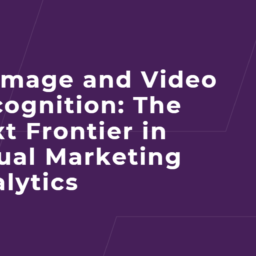Digital advertising has come a long way since the early days of banner ads and pay-per-click campaigns. As technology evolves and consumer behavior shifts, the future of digital advertising promises to be more innovative, data-driven, and personalized than ever before. But what exactly does the future hold? In this blog, we’ll explore emerging trends, technologies, and strategies shaping the future of digital advertising and what businesses need to know to stay ahead.
1. The Rise of Artificial Intelligence (AI) and Machine Learning
Why It Matters: AI and machine learning are revolutionizing digital advertising by enabling more sophisticated data analysis, targeting, and personalization.
What to Expect:
- Predictive Analytics: AI can analyze historical data to predict future consumer behavior, allowing advertisers to optimize campaigns proactively. For example, AI can forecast which products or services will be in demand and adjust ad spend accordingly.
- Enhanced Personalization: Machine learning algorithms can create hyper-personalized ad experiences by analyzing user behavior, preferences, and interactions. This means ads will become more relevant, engaging, and less intrusive.
- Automated Ad Creation: AI-powered tools can generate ad copy, design, and even video content based on data insights, streamlining the creative process and allowing for real-time adjustments.
2. The Growing Importance of Privacy and Data Protection
Why It Matters: As consumers become more aware of privacy issues and data breaches, regulations and expectations around data protection are tightening.
What to Expect:
- Stricter Regulations: Regulations like the General Data Protection Regulation (GDPR) and the California Consumer Privacy Act (CCPA) are setting new standards for how data is collected, stored, and used. Advertisers will need to navigate these regulations carefully to avoid fines and build trust with consumers.
- Data-Driven Strategies with Privacy in Mind: Marketers will need to focus on first-party data (data collected directly from users) and adopt privacy-centric approaches, such as data anonymization and transparent consent processes, to ensure compliance and maintain consumer trust.
3. The Evolution of Programmatic Advertising
Why It Matters: Programmatic advertising uses automated systems to buy and optimize ad placements in real-time, making it more efficient and effective.
What to Expect:
- Advanced Programmatic Techniques: Programmatic advertising will continue to evolve with advancements in AI and machine learning, enabling more precise targeting and real-time bidding based on complex data signals.
- Integration with Other Channels: Programmatic techniques will expand beyond display ads to include formats like connected TV (CTV), digital out-of-home (DOOH), and audio ads, creating more opportunities for cross-channel integration.
4. The Growing Role of Voice Search and Smart Speakers
Why It Matters: With the increasing use of voice-activated devices like Amazon’s Alexa and Google Home, voice search is becoming a significant player in digital advertising.
What to Expect:
- Voice Search Optimization: As voice search queries differ from text-based queries, advertisers will need to optimize their content and ads for voice search. This involves focusing on natural language and long-tail keywords.
- Voice Commerce: Voice-activated shopping is on the rise, with consumers making purchases through voice commands. Advertisers will need to explore opportunities for voice-enabled ads and seamless purchasing experiences.
5. The Impact of Augmented Reality (AR) and Virtual Reality (VR)
Why It Matters: AR and VR technologies offer immersive experiences that can significantly enhance the effectiveness of digital advertising.
What to Expect:
- Interactive Ads: AR and VR can create interactive and engaging ad experiences, such as virtual try-ons for products or immersive brand experiences. These technologies can capture users’ attention and provide a memorable experience.
- Enhanced Brand Experiences: Brands will leverage AR and VR to create virtual showrooms, interactive product demonstrations, and virtual events, allowing consumers to engage with products and services in new and exciting ways.
6. The Rise of Shoppable Content and Social Commerce
Why It Matters: Social media platforms are increasingly integrating e-commerce features, allowing users to shop directly from their feeds.
What to Expect:
- Seamless Shopping Experiences: Platforms like Instagram, Facebook, and TikTok are incorporating shoppable posts, stories, and live streams, enabling users to make purchases without leaving the app. Advertisers will need to adapt to these new shopping behaviors and integrate shoppable content into their strategies.
- Social Proof and Influencer Partnerships: Social proof, such as user reviews and influencer endorsements, will continue to play a crucial role in driving purchase decisions. Brands will invest in influencer partnerships and leverage user-generated content to build trust and credibility.
7. The Continued Growth of Video Advertising
Why It Matters: Video remains one of the most engaging and effective forms of content for digital advertising.
What to Expect:
- Short-Form Videos: Platforms like TikTok and Instagram Reels have popularized short-form video content. Advertisers will need to create concise, engaging videos that capture attention quickly and deliver key messages effectively.
- Interactive Video Ads: Interactive video ads, which allow users to engage with content through clicks, polls, or choices, will become more prevalent. These ads enhance user engagement and provide valuable insights into viewer preferences and behavior.
8. The Emergence of 5G Technology
Why It Matters: 5G technology promises faster internet speeds, lower latency, and improved connectivity, which will impact digital advertising.
What to Expect:
- Enhanced Mobile Experiences: 5G will enable richer and more responsive mobile ad experiences, such as high-quality video streaming and interactive content. Advertisers will need to optimize their content for faster load times and seamless mobile interactions.
- New Advertising Opportunities: The increased data transfer capabilities of 5G will open up new possibilities for real-time, location-based advertising and augmented reality experiences.
9. The Role of Sustainability and Ethical Advertising
Why It Matters: Consumers are increasingly concerned about sustainability and ethical practices, influencing their purchasing decisions.
What to Expect:
- Sustainable Advertising Practices: Brands will need to demonstrate their commitment to sustainability and ethical practices in their advertising. This includes using eco-friendly materials, supporting social causes, and transparently communicating their values.
- Authentic Brand Messaging: Consumers will seek authentic and honest brand messaging. Advertisers will need to focus on building genuine connections with their audience and addressing social and environmental issues.
Conclusion
The future of digital advertising is set to be more dynamic and innovative than ever. From the integration of AI and machine learning to the rise of new technologies like AR, VR, and 5G, advertisers must stay ahead of trends and adapt their strategies to meet evolving consumer expectations. By embracing these changes and leveraging emerging technologies, businesses can create more engaging, effective, and ethical advertising experiences that resonate with their audience and drive meaningful results.
As we look to the future, staying informed about these developments and continuously refining your digital advertising strategies will be key to maintaining a competitive edge in the ever-evolving digital landscape.




